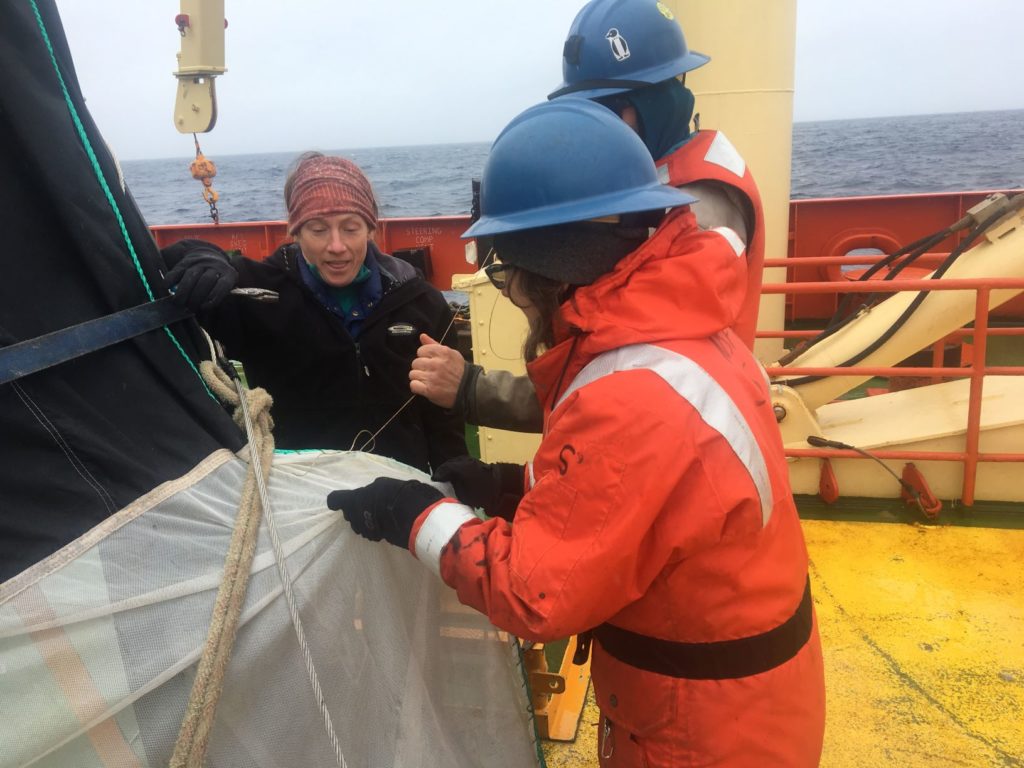“Foul weather embroidery,” is that really a thing?

January 9, 2019 (Note: this is #10 in a series of posts describing my NSF-sponsored fieldwork in Antarctica aboard the Laurence M. Gould).
One thing I like about being in the field is that problems happen and you have to deal with them. I guess that’s true of life in general, but in the field, often your work can’t move forward until you solve the problem. Sometimes there is urgency about finding a solution. Fieldwork is expensive and the opportunities are precious and often time-limited. On the other hand, sometimes I have a sense of time expanding. Nothing can move forward until you solve the problem, one way or another, however long it takes, using whatever resources you have on hand. Today’s problem wasn’t particularly unexpected, and the solution was relatively straightforward. The net came back with a large gash next to one of the seams. The ship technicians and the zooplankton group were both prepared for this kind of thing and had heavy duty needles and line on hand for mending. Sewing skills are intricately linked with seafaring, constantly needed for making and repairing sails and nets. Still it’s funny to think of deploying a “softer” skill under harsh conditions, and we laughed as Debbie pulled on her foul-weather gear and hard hat to try some “embroidery.” [In fact, I did check out the repair, and it’s a straight, neat, well-reinforced line. I didn’t actually see any fleur-de-lis or other embellishments.] The repair was finished surprisingly quickly, and we were back in business. Overall, work is continuing to progress well. We used a modified method to collect plankton more gently (non-filtering cod end), so we could get live plankton in good condition for experiments. Now we have copepods and pteropods both incubating in different sets of experiments on the ship.